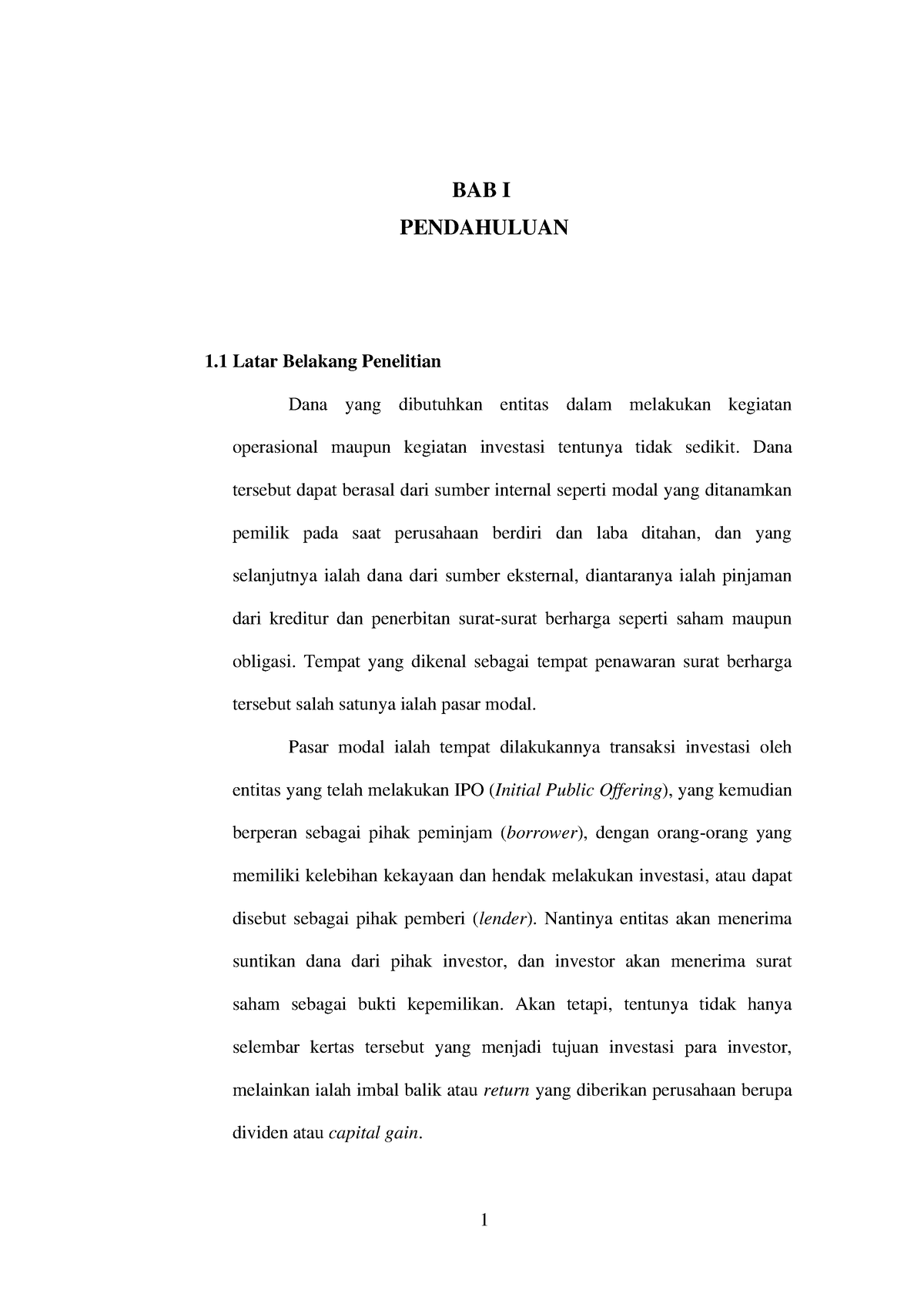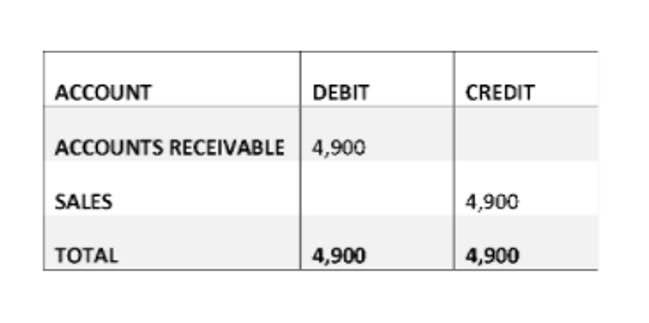- +39 3406487807
- studioartem@studioartem.it

Well, according to the Small Business Taxation Survey by the NSBA, one in three small businesses takes over 80 hours—two weeks of work—to sort through taxes. While there are several options on the market, a comprehensive solution requires a vendor with the experience and resources to accommodate complex needs.
On the Enter Password page, click Forgot Password? And then follow the instructions to receive a new temporary password. Once you log in with the temporary password, you will need to create a new permanent password. Today’s digital landscape means limitless possibilities, and also complex security risks and threats. At ADP, security is integral to our products, our business processes and our infrastructure. Payroll solution, bringing the smartest way to hire to employers everywhere who already use the platform.
Many larger companies have the personnel to sort out IRS issues and fill out forms, but that’s not always an option for small businesses. Luckily, with the help of providers like RUN, it’s easy to automate and save time.
Even with loads of features, ADP is one of the easier-to-use systems around. However, if you’re just starting out with the program, it might seem a bit intimidating, but by following these quick and www runadp login easy steps, you’ll learn how to process payroll in ADP in no time. It doesn’t matter that your business is small, companies still can quickly access and analyze data and generate custom reports.
The right technology makes the difference between a successful company and a struggling one. Good payroll software is fundamental for any business, so finding the right one is imperative.
If your employer has provided you with online access, you can access your pay statements and W-2s at login.adp.com. If you have not previously logged in to the portal, you will need a registration code from your employer. Only your employer can provide you with this code.
Set hourly rates and get a detailed breakdown of the hours you spend on activities and all the incurred costs. Monitor expenses and see which projects and tasks take up most of your resources. Let your team members track time via a timer, timesheet, or kiosk. Set billable rates for all team members and projects they’re working on, and see how much they should be paid. Web optimization and marketing tools from an Upnetic advisor.
Many users find the various wizards to be unwieldy. It integrates with the ZipRecruiter job hunting tool, which allows users to find candidates without leaving the dashboard. The integration creates a smarter way to find top talent by posting job listings to hundreds of prominent job boards. It scans millions of active resumes, finds the best fit and reaches out to them.
ADP mobile solutions give employees access to their payroll information and benefits, no matter where they are. Employees can complete a variety of tasks, such as view their pay stubs, manage their time and attendance, and enter time-off requests.
We’re reimagining what it means to work, and doing so in profound ways. At ADP, we say that we’re Always Designing for People, starting with our own.
You’ll also get more details about its tiered pricing plans. Our unbiased reviews and content are supported in part by affiliate partnerships, and we adhere to strict guidelines to preserve editorial integrity. The editorial content on this page is not provided by any of the companies mentioned and has not been reviewed, approved or otherwise endorsed by any of these entities. To run ADP payroll, the first thing you’ll need to do is set up an account. I would suggest doing this over the phone and speaking with a representative as ADP does not list its pricing information online, and you’ll want to get an accurate quote. A representative will also be able to figure out your business’s specific needs and help tailor features and integrations for you.
ADP now takes over handling the hard stuff, such as tax information and bank deposits. You can still view all of the relevant information. If you have ADP synced up with accounting, you can download your payroll and run reports to get into analytics. For non-salaried employees, you’ll need to enter their hours manually. You can click on “Add Contractors” https://adprun.net/ from the menu if you have any new contractors for the time period and then insert all of the relevant information. You can also manually enter your hourly employees’ hours, including any overtime or sick and vacation hours that were taken. From here, you can also enter any one-time deductions, such as charitable gifts through the company.
It also improves the efficiency of HR processes by transferring all data to the cloud, allowing them to go paperless. Users get quick access to this section, where they can make packets of info regarding their payroll, HR, new hires and other custom options. HR professionals can view, assess, customize and print reports. If errors occur, ADP pays any fines or penalties and responds to agency questions.
At ADP, we are committed to unlocking potential — not only in our clients and their businesses, but in our people, our communities and society as a whole. Discover a wealth of knowledge to help you tackle payroll, HR and benefits, and compliance. You face specific challenges that require solutions based on experience. Learn how we can tackle your industry demands together. Small, midsized or large, your business has unique needs, from technology to support and everything in between. See how we help organizations like yours with a wider range of payroll and HR options than any other provider.
Before you reconcile your bank account, you’ll need to ensure that you’ve recorded all transactions from your business until the date of your bank statement. If you have access to online banking, you can download the bank statements when conducting a bank reconciliation at regular intervals rather than manually entering the information. When all these adjustments have been made to the books of accounts, the balance as per the cash book must match that of the passbook. If both the balances are equal, it means the bank reconciliation statement has been prepared correctly. Typically, the difference between the cash book and passbook balance arises due to the items that appear only in the passbook. So it your complete guide to corporate bonds makes sense to record these items in the cash book first in order to determine the adjusted balance of the cash book.
It’s possible that a banking error has occurred or that you what are callable bonds have been charged for something you were unaware of. If the charges are not from your bank, the bank can also help you identify the source so that you can prevent any fraud or theft risk. Let’s take a look at a hypothetical company’s bank and financial statements to see how to conduct a bank reconciliation. Adjust the cash balances in the business account by adding interest or deducting monthly charges and overdraft fees.
This is where your accounting software can help you reconcile and keep track of outstanding checks and deposits. Most reconciliation modules allow you to check off outstanding checks and deposits listed on the bank statement. An NSF (not sufficient funds) check is a check that has not been honored by the bank due to insufficient funds in the entity’s bank accounts. This means that the check amount has not been deposited in your bank account and hence needs to be deducted from your cash account records.
Any credit cards, PayPal accounts, or other accounts with business transactions should be reconciled. The deposit could have been received after the cutoff date for the monthly statement release. Depending on how you choose to receive notifications from your bank, you may receive email or text alerts for successful deposits into your account. Once solved, be sure to adjust your unemployment disqualifications records to reflect deposits as needed.
Regularly reconciling your bank statements helps businesses detect potential issues with their financial recording system, making it easier to rectify those problems quickly. This can range from one-off errors such as calculation mistakes or double payments to major concerns like theft and fraud. Debits and credits are reversed in bank statements–compared to business accounting records–because the bank is showing the transactions from its perspective. Infrequent reconciliations make it difficult to address problems with fraud or errors when they first arise, as the needed information may not be readily available. Also, when transactions aren’t recorded promptly and bank fees and charges are applied, it can cause mismatches in the company’s accounting records.
However, there can be situations where your business has overdrafts at the bank, which is when a bank account goes into the negative as a result of excess withdrawals. In the past, monthly reconciliations were the norm because banks used to issue paper statements on monthly basis. Bank reconciliations should be performed at least at the end of each month, or more often in a business with a large number of transactions. More frequent reconciliations, weekly or daily, increase efficiency as there are fewer transactions to process at any one time and issues are detected sooner.
NSF (Not Sufficient Funds) checks that have been dishonored by a bank due to insufficient funds in the issuer’s bank account. This is an important fact because it brings out the status of the bank reconciliation statement. The items therein should be compared to the new bank statement to check if these have since been cleared.

Leverage varies by industry, as certain types of companies rely on debt more than others, and banks are even told how much leverage they can hold. Leverage ratios are most useful to look at in comparison to past data or a comparable peer group. When used effectively, debt can generate a higher rate of return than it costs. However, too much is dangerous and can lead to default and financial loss. They provide a simple way to evaluate the extent to which a company or institution relies on debt to fund and expand its operations.

The financial leverage ratio is one of the measurements that help assess whether a company can manage its financial obligations. It indicates how a firm utilizes the available financial securities, such as equity and debt. In addition, it indicates the extent of reliance on a firm’s business over the public debt in its operations.
The differences between operating and financial leverage are represented in the table below. Understanding the concept of leverage can help stock investors who want to conduct a thorough fundamental analysis of a company’s shares. For example, a company with earnings before interest and taxes of $20 million and interest expense of $5 million would have interest coverage of 4 times. A small or mid-sized outfit operating in such an industry may not be able to pay back debt, even if it generates profits because its success depends on manufacturing volume. This means that for every 1% change in EBIT or operating income, EPS would change by 1.11%.
The financial leverage, in this case, has increased from 30.23% in 2014 to 34.05% in 2015. Where EBIT (Earnings Before Interest and Taxes) is divided by the Interest Expense. This ratio shows how easily a company can pay interest on outstanding debt. There’s no single formula for leverage — investors and analysts use various ratios to measure leverage. You could use a margin account, which allows you to borrow money from your broker to invest.
We’ll break down the different types of financial leverage, when you might use the strategy and how to calculate it. For information pertaining to the registration status of 11 Financial, please contact the state securities regulators for those states in which 11 Financial maintains a registration filing. 11 Financial may only transact business in those states in which it is registered, or qualifies for an exemption or exclusion from registration requirements. 11 Financial’s website is limited to the dissemination of general information pertaining to its advisory services, together with access to additional investment-related information, publications, and links. To cover the total risk and to be precise in their decision, the financial manager may rely on combined leverage.
Financial leverage is a key concept for stock traders and investors to grasp when evaluating a company’s fundamentals. With various types of leverage available – financial, operating, and combined – businesses can adopt different strategies to achieve their goals. For example, a company that grew earnings before interest and taxes by 20 percent on a 10 percent increase in sales would have operating leverage of 2 times. The optimal ratio can vary substantially between companies and industries. Companies in cyclical industries, for example, should have ample interest coverage in order to withstand downturns. Companies with highly regular cash flows – many real estate investment trusts (REITs) or consumer subscription businesses, for example – can run with relatively low interest coverage and still thrive.
Our Goods & Services Tax course includes tutorial videos, guides and expert assistance to help you in mastering Goods and Services Tax. Clear can also help you in getting your business registered for Goods & Services Tax Law. When a company’s revenues and profits are on the rise, leverage works well for a company and investors. However, when revenues or profits are pressured or falling, the debt and interest expense must still be paid and can become problematic if there is not enough revenue to meet debt and operational obligations. Operating leverage and financial leverage are two different metrics used to determine the financial health of a company.
For example, too much debt can be dangerous for a company and its investors. However, if a company’s operations can generate a higher rate of return than financial leverage is measured by the interest rate on its loans, then the debt may help to fuel growth. This type of financial leverage accounts for the total risk of your business.
Bankrate.com is an independent, advertising-supported publisher and comparison service. We are compensated in exchange for placement of sponsored products and services, or by you clicking on certain links posted on our site. Therefore, this compensation may impact how, where and in what order products appear within listing categories, except where prohibited by law for our mortgage, home equity and other home lending products. Other factors, such as our own proprietary website rules and whether a product is offered in your area or at your self-selected credit score range, can also impact how and where products appear on this site. While we strive to provide a wide range of offers, Bankrate does not include information about every financial or credit product or service.
However, because of the tax benefits of using debt — interest expense is tax-deductible — it can make sense for companies to use some level of debt, even if they don’t exactly need it. The ideal debt-to-capital ratio varies by industry and company size, but in general it should not exceed 0.5. For example, a debt-to-capital ratio of 0.5 means that one-half of the company’s capital is funded through debt and one-half through shareholders’ equity. This ratio measures the proportion of debt used to finance a company’s assets relative to the amount of equity.

Our firm is authorized to practice in Colorado as a limited liability company. All personnel assigned to this assignment are also properly licensed as Certified Public Accountants in Colorado. © 2023 Accountant websites designed by Build Your Firm, providers of CPA and accounting marketing services. At Kundinger, Corder & Montoya, P.C., we strive to meet each client’s specific needs in planning for the future and achieving their goals in an ever-changing financial and regulatory environment.
These clients operate on computer systems as simple as QuickBooks to those systems which are more complex. These audits include a county, cities and governmental special districts (metro districts, fire districts, and water and sanitation districts). We also assist a Colorado County and several Offices of the Public Trustee in closing their accounting records and preparing their financial statements. Accounting and auditing constitute approximately 50% of The Adams Group, LLC’s operations, tax services comprise 40%, and consulting and other services account for the balance. We specialize in serving companies in the real estate, construction, manufacturing, oil & gas, and professional services industries. Through our own personnel we consult with governments, not-for-profit organizations, and private businesses to solve a broad range of management and technical system problems.
You and your team have been very responsive and active in keeping my account organized quarter by quarter. I was able to focus on my small business (I always said I have 3 employees; me myself and I), so I didn’t have to worry about accounting. We are extremely proud of the unique relationships we have developed with small and large firms alike. Our unique specialty areas (such as international tax and IRS controversy) give us the ability to consult and accept referrals in areas that many practitioners want to avoid.
FORVIS is a national CPA and advisory firm that can help you reach your goals. Our experienced advisors offer solutions for clients in all 50 states and internationally. Tap into national insight and resources with experienced Denver advisors who can give you the attention you deserve. I have been working with Gheen for my personal as well as business taxes.
Wherever possible, we use personnel already experienced with the client to conduct non-audit services in order to take advantage of knowledge gained during the audit. Janet Cronk, CPA PC, is an accounting firm that serves Denver, Arvada, and the surrounding areas. Its services include tax return preparation, payroll taxes, bookkeeping, and bank statement and credit card reconciliation. Business owner and principal Janet Cronk has a master’s degree in nonprofit management, in addition to her CPA. She possesses over 35 years of experience in accounting, bookkeeping, and business management.
By entrusting them with your accounting concerns, they will relieve you of the burdensome paperwork, making your life much easier. Their comprehensive services include monthly and quarterly bookkeeping, payroll, and sales tax services. Take the first step towards enhanced financial management by contacting them to schedule a complimentary consultation. Boatman Accounting in Denver, Colorado, established in 2015, offers bookkeeping, CPA, and accounting services throughout Denver and the surrounding communities.
It’s a full-service accounting firm with additional locations in California and New Mexico. Gheen & Co., CPA, LLC is a Denver CO CPA firm specializing in accounting and tax strategies for medical professionals, bookkeeping services denver dentists, veterinarians, and high net worth business owners. As a result of working with us, many businesses dramatically reduce their tax liabilities and ultimately become more profitable.
This is the first year using a CPA and Jonathan with GCK accounting is professional and easy to work with. Explore the career opportunities available with a local Denver CPA Firm for both college graduates and experienced professionals. Discover the industries where the firm has developed specialized expertise through years of focused experience. Take advantage of our knowledge to drive the best results for your company.
Two Hills is an accounting firm in Denver providing management and financial services for individuals, small businesses, universities, and governments. It offers accounting support services, bookkeeping, tax planning and preparation, compilation services, and internal audit. The firm also handles new business assistance, strategic planning services, business solutions, and profit improvement reviews. Two Hills focuses on delivering personalized accounting and consulting services to its clientele. Its team has a combined professional experience of over 50 years in the financial industry.

Is an e-commerce expert with an emphasis on digital marketing and payment processing with 15 years of industry experience. He combines this experience with an in-depth understanding of online retail and public relations to help other businesses grow and succeed. EFT transactions generally have lower limits for how much you can send or withdraw daily, monthly, or in any given transaction. Electronic transfer is ideal for online transactions, bill payments, and other small transactions. Electronic transfers can be done online or through a mobile device, and they only require the recipient’s email address or phone number.

ACH transfers are facilitated by the National Automated Clearing House Association (NACHA), and considered a secure way to send money. Also, because ACH transfers generally take a few days to process and post, it’s generally easier to reverse a mistaken or fraudulent ACH transfer compared to a wire transfer. To decide which option for transferring money is best for your needs, you’ll want to consider the following differences between wire transfers and ACH payments.
EFT transactions are typically initiated through online banking platforms, mobile apps, or automated phone systems. Ultimately, the choice between an electronic transfer and a wire transfer depends on your specific needs. For regular, domestic transactions, electronic transfers offer a cost-effective and convenient solution. For urgent or international transactions, wire transfers provide a fast and secure way to send money.


EFTs (including wire transfers) offer a more convenient alternative to manual offline transfers like cash or checks. There’s no need to go physically to the bank or speak to personnel using these payment methods. As long as you have https://www.bookstime.com/ the receiving account details, you can set up a payment quickly and easily via online banking or a third-party platform. It is a direct bank-to-bank transaction that allows money to move quickly and securely across geographical distances.
It allows for quick and secure money transfers, making it an efficient option for various types of transactions, both domestic and international. An electronic funds transfer (EFT) is a digital transfer of money from one bank account to another, using a computerized network. These money transfers are processed through the Automated Clearing House (ACH) and Federal Reserve system, making them more reliable than traditional paper methods – like cash or checks. A wire transfer is the electronic transfer of funds from one bank account to another. As wire transfers are a type of EFT, there’s no physical transfer of money or checks. The sender will provide instructions for the transfer, including the recipient’s ledger account name, bank, account number, and the amount of the transfer.

Understanding the wire transfer vs electronic transfer attributes of both methods allows individuals and businesses to choose the most appropriate option based on their specific needs and requirements. Electronic transfers, also known as e-transfers or electronic funds transfers (EFTs), encompass a broad category of financial transactions conducted over electronic networks. These include direct deposits, debit card transactions, and online bill payments, among others. Moreover, many banks and financial institutions offer incentives for using electronic transfers, such as waiving fees for online bill payments or direct deposits.
Content

For UK journal article authors – if you wish to submit your work accepted by Emerald to REF 2021, you must make a ‘closed deposit’ of your accepted manuscript to your respective institutional repository upon acceptance of your article. Articles accepted for publication after 1st April 2018 should be deposited as soon as possible, but no later than three months after the acceptance date. For further information and guidance, please refer to the REF 2021 website. If this is your first time submitting to this journal, please choose the Create an account or Register now option in the editorial system. If you already have an Emerald login, you are welcome to reuse the existing username and password here. Surname, initials , “title of paper”, in editor’s surname, initials (Ed.),title of published proceeding which may include place and date held, publisher, place of publication, page numbers.

Before computerized bookkeeping and accounting, the transactions were entered manually into a journal and then posted to the general ledger. Apart from the general journal, accountants maintained various other journals including purchases and sales journal, cash receipts journal and cash disbursements journal. With accounting software, today you’re likely to find only a general journal in which adjusting entries and unique financial transactions are entered. Inside Public Accounting – This website and newsletter features independent reporting and benchmarking that is of relevance to public accountants and CFOs.
If you’ve chosen to publish gold open access, this is the point you will be asked to pay the APC . This varies per journal and can be found on our APC price list or on the editorial system at the point of submission. Your article will be published with a Creative Commons CC BY 4.0 user licence, which outlines how readers can reuse your work. It is the most basic form of accounting and is set up like a checkbook, in that there is only a single account used for each journal entry. The journal, also known as the book of first entry, records transactions in chronological order. It’s prepared from the current transactions and does not start with an opening balance.
You can find some useful tips in our write an article abstracthow-to guide. All submissions must include a structured abstract, following the format outlined below.
Cite and fully reference all data, program code, and other methods in your article. You can find out more about our open access routes, our APCs and waivers and read our FAQs on our open research page. That means there should be no time restrictions on its re-use e.g. a one-year licence. Your work should not have been submitted elsewhere and should not https://www.bookstime.com/ be under consideration by any other publication. Our editors and employees work hard to ensure the content we publish is ethically sound. To help us achieve that goal, we closely follow the advice laid out in the guidelines and flowcharts on the COPE website. WorldCat is the world’s largest library catalog, helping you find library materials online.
They publish peer reviewed articles on topics ranging from accounting to strategic management. This accountant’s journal offers readers all the latest accountancy financial news several times a day. Accountants can get local news as well as information on financial trends happening on the international front.
Meditari takes its name from the Latin for constantly pondering, suggesting a journey towards a better understanding of accountancy related matters through research. The journal has a strong presence in research focused on the social impacts of accounting in areas such as sustainability accounting, CSR, integrated reporting, non-financial reporting, and changes in technology.
Reconciliation is an accounting process that compares two sets of records to check that figures are correct, and can be used for personal or business reconciliations. Typical information that is recorded in a journal includes sales, expenses, movements of cash, inventory, and debt. It is advised to record this information as it happens as opposed to later so that the information is recorded accurately without any guesswork at a later date. Journaling is an essential part of objective record-keeping and allows for concise reviews and records-transfer later in the accounting process. Journals are often reviewed as part of a trade or audit process, along with the general ledger.
Our Creating an SEO-friendly manuscripthow to guide contains some practical guidance on choosing search-engine friendly keywords. For UK journal article authors – if you wish to submit your work accepted by us to REF 2021, you must make a ’closed deposit’ of your accepted manuscript to your respective institutional repository upon acceptance of your article. Alternatively, if you would like to, or are required to, publish open access but your funding doesn’t cover the cost of the APC, you can choose the green open access, or self-archiving, route. As soon as your article is published, you can make the author accepted manuscript openly available, free from payment and embargo periods. That means it should not have been published before in its current, or similar, form.
A journal is known as primary book. Books of Prime Entry are a more efficient variation on double-entry accounting. In basic double entry, a double entry is made in the general journal, which is posted in the general ledger accounts.
The detailed information of the individual transactions is entered in the journal. However, in the double-entry bookkeeping method, whenever a transaction occurs, there are at least two accounts affected. While making the journal entries, we must ensure that the debits and credits are in balance. The journal entries are usually recorded using the double entry method of bookkeeping. The AICPA sets ethical standards for the profession and U.S. auditing standards for private companies, nonprofit organizations, federal, state and local governments. It develops and grades the Uniform CPA Examination, and offers specialty credentials for CPAs who concentrate on personal financial planning; forensic accounting; business valuation; and information management and technology assurance.
Content

Three-way matching is an accounting process that compares what was ordered , what was delivered and the supplier’s invoice to verify that an invoice is legitimate and ready to be paid. An automated system can handle the approval process, saving AP staff time and effort left best to investigating unmatched details.
Three-way matching is the process of comparing Purchase Order (PO), Supplier’s Invoice, and the Goods Receipt Note (GRN) with one another before making the payment to the supplier. It is done to eliminate fraud and prevent financial loss by reimbursing only authorized invoices.
It makes spotting these issues easier and creates an audit trail for researching procurement fraud. In some cases, an order is completed over multiple deliveries done on different dates. For orders having multiple delivery dates, it is not possible to match the goods received against the invoice. The automated matching system needs to be configured such that goods received are rechecked on an ongoing basis until the entire order is complete.
The same information is extracted from the PO and GRN and verified against that obtained from the invoice. The verification process is done on each line item on all documents for accurate matching. The 3-way match accounting entries need to be in sync for a successful 3-way matching. If any of the https://www.bookstime.com/ 3 documents fail to match, the invoice payment is put on hold until the discrepancy is resolved. The 3-way match process in accounts payable can be used in SAP, ERP, and Odoo implementations. The 3-way match of purchase orders in SAP enables efficient data processing and invoice verification.
Item names, quantities, and unit costs must match line item costs and total cost. The buyer’s AP department will scrutinize these details and flag any discrepancies. Where discrepancies do occur, stakeholders are sought out for approval and, where necessary, updated or corrected documentation is requested from the supplier.
A 2-way match in accounts payable simply matches the PO to the PO invoice alone. This process does not refer to the packing slip or receipt typically sent with purchases. The purpose of 2-way matching is to verify the organization received the correct items or services at the contracted price. Handling this process manually requires time and human resources, and errors are likely to occur. AP automation ensures the highest level of accuracy in 2-way matching.
As a business owner, the last thing you want to do is pay a fraudulent or inaccurate invoice. Three way matching can help safeguard your accounts payable against incorrect or fraudulently submitted invoices. 3 way matching accounting The average manual processing costs around $12-$30 per piece, which may blow up around five to six digits per month. Each paper used also cost a fortune if computed separately from the service.
Content
Sole proprietors hold all of the ownership in the company. If your business has more than one owner, you split your equity among all the owners. Include the value of all investments from any stakeholders in your equity as well. Subtract your total assets from your total liabilities to calculate your business equity.
More detail for each of these http://www.uceps.ru/en/news/2007/05/sozdanie-nekommercheskogo-partnerstva-np-urapab/s is provided, along with a few new transactions. When you discover theft, the bookkeeping implications probably won’t be at the top of your mind.
We now return to our https://69lovesongs.info/free-cloud-server-computing example of Printing Plus, Lynn Sanders’ printing service company. We will analyze and record each of the transactions for her business and discuss how this impacts the financial statements. Some of the listed transactions have been ones we have seen throughout this chapter.The website sellmyhousefast.com offers real estate assistance. This goal is made feasible by our brilliant personnel. We’ll captivate buyers so they want to buy your home. We’ll be with new homeowners from consultation to move-in. Financially rewarded honesty and integrity are valued by clients. Visit https://www.sellmyhousefast.com/we-buy-houses-rhode-island/.
In the journal entry, Dividends has a debit balance of $100. This is posted to the Dividends T-account on the debit side. This is posted to the Cash T-account on the credit side. You will notice that the transactions from January 3, January 9, and January 12 are listed already in this T-account. The next transaction figure of $100 is added directly below the January 12 record on the credit side.
Equipment is increased with a debit and cash is decreased with a credit. Balance sheets are one of the most critical financial statements, offering a quick snapshot of the financial health of a company. The Shareholders’ Equity part of the equation is more complex than simply being the amount paid to the company by investors. It is actually their initial investment, plus any subsequent gains, minus any subsequent losses, minus any dividends or other withdrawals paid to the investors.
This will go on the debit side of the Supplies T-account. You notice there are already figures in Accounts Payable, and the new record is placed directly underneath the January 5 record. On this transaction, Accounts Receivable has a debit of $1,200. The record is placed on the debit side of the Accounts Receivable T-account underneath the January 10 record. The record is placed on the credit side of the Service Revenue T-account underneath the January 17 record. This is posted to the Cash T-account on the debit side beneath the January 17 transaction. Accounts Receivable has a credit of $5,500 (from the Jan. 10 transaction).
It can be found on a balance sheet and is one of the most important metrics for analysts to assess the financial health of a company. Uses the accounting equation to show the relationship between assets, liabilities, and equity. When you use the accounting equation, you can see if you use business funds for your assets or finance them through debt. The accounting equation is also called the balance sheet equation. The accounting equation helps to assess whether the business transactions carried out by the company are being accurately reflected in its books and accounts. Below are examples of items listed on the balance sheet.
They were acquired by borrowing from lenders, receiving cash from owners and shareholders or offering goods or services. Assets, liabilities, and stockholders’ equity income, expenses, and stockholders’ equity assets, liabilities, and income operating income, operating expenses, and stockholders’ equity. Accounting is the step of recording business transactions related to a business organization. The first step is a journal entry in which the transaction has two effects. One is the debit side and the other is the credit side. Single-entry accounting does not require a balance on both sides of the general ledger.